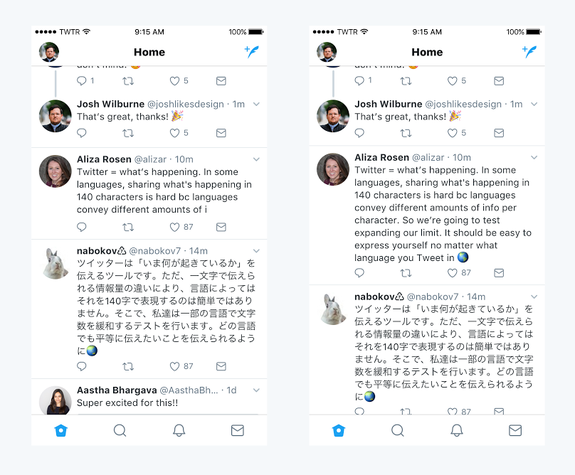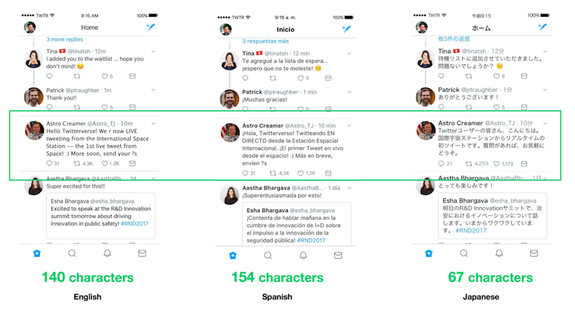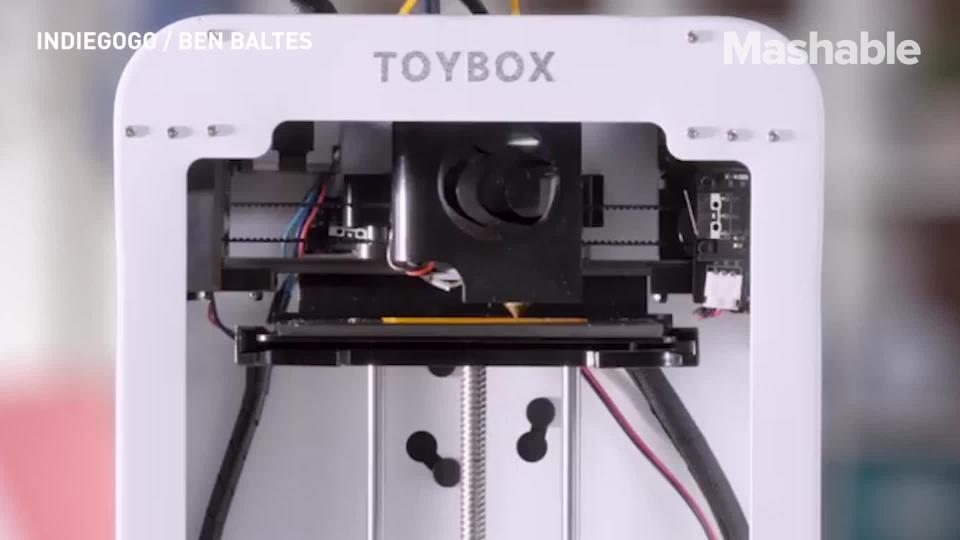Twitter is actually ditching the 140-character limit (for some)

Twitter just changed the rules of tweeting.
The company is now testing a change that doubles Twitter's character limit for "a small group" of accounts. It's not clear when the change will roll out more broadly.
SEE ALSO: Twitter finally breaks silence on why it's never suspended President Trump
Under the test, users will be able to send tweets of up to 280 characters at a time. Those who are not part of the initial test will be able to see and interact with the longer tweets as they normally would.
As it often does with significant new features, Twitter says it will use the test to get feedback and, if necessary, make tweaks based on users' responses to the change. It's not clear how long this process will take, but the intention seems to be to eventually make the feature a permanent fixture.
"Although we feel confident about our data and the positive impact this change will have, we want to try it out with a small group of people before we make a decision to launch to everyone," Twitter wrote in a blog post today.
Until it does, the biggest change for most will be getting used to seeing paragraph-sized tweets in their timelines.

Image: Twitter
Still, it's a major shift for the service, whose 140-character constraint has been an iconic feature for more than a decade. And it'll be a big adjustment for users accustomed to finding creative ways to succinctly cram their thoughts into 140 characters.
"Twitter is about brevity. That is something we will never change," the company writes in a blog post — likely in an attempt to head off the inevitable backlash the change will cause with many longtime users who get fired up over even the smallest changes.
"We understand since many of you have been Tweeting for years, there may be an emotional attachment to 140 characters — we felt it, too. But we tried this, saw the power of what it will do, and fell in love with this new, still brief, constraint."
Even though the change is likely to catch many off guard, it shouldn't be all that surprising for close observers of the company. Twitter has been rumored to be working on some form of longer tweets for more than a year.
Last year, Jack Dorsey himself suggested Twitter's 140-character constraint wasn't necessarily meant to be around forever.
— jack (@jack) January 5, 2016
"We didn't start Twitter with a 140-character restriction. We added that early on to fit into a single SMS message," Dorsey wrote. "We're not going to be shy about building more utility and power into Twitter for people."
Earlier this year, Twitter relaxed its rules so that text used for handles in replies as well as attachments like photos and GIFs would no longer count against the 140-character limit. Those same rules will still apply to 280-character tweets, the company says.
The company claims there are practical reasons for the change, too, noting that around 9% of all tweets sent in English run into the 140-character limit, which suggests some demand for the feature.

Image: twitter
Twitter will not be rolling out the change to Japanese, Chinese, and Korean-speaking users because those languages are structured in a way that already allows speakers to "convey about double the amount of information in one character as you can in many other languages," according to the company.
WATCH: Have almost any toy imaginable, at the click of a button


 Yahoo Finance
Yahoo Finance 